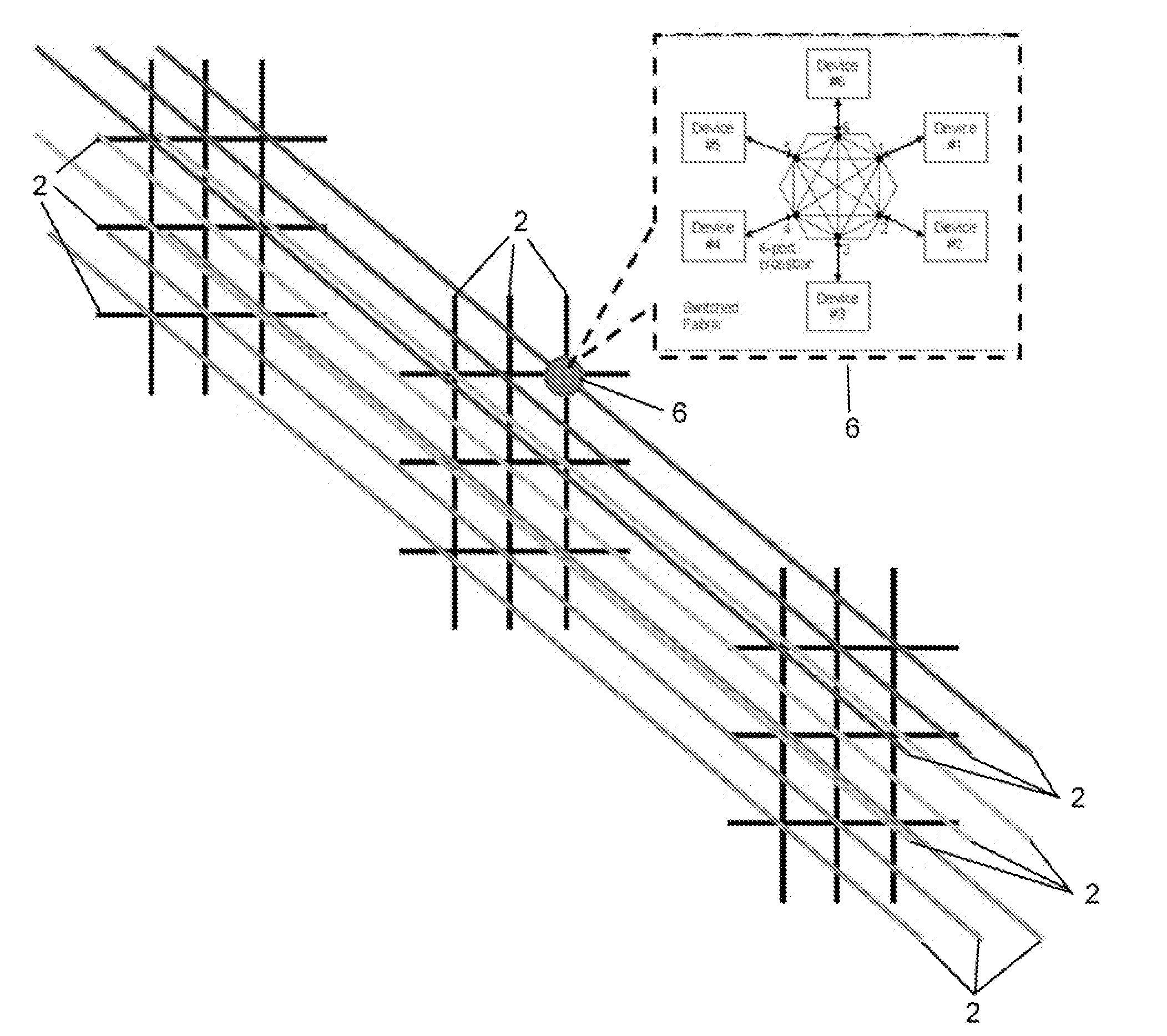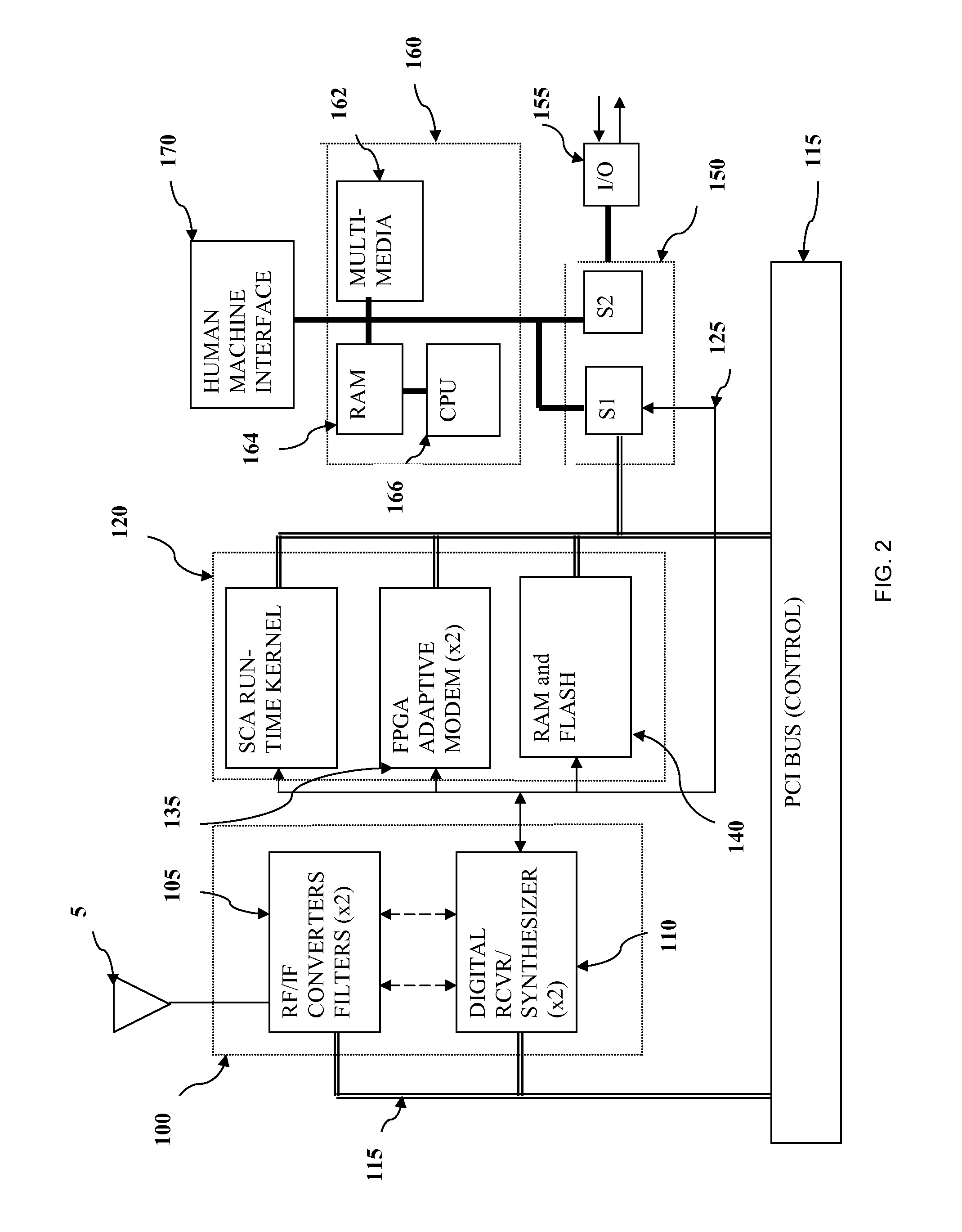Programmable logic device with embedded switch fabric
a technology of programmable logic and switch fabric, which is applied in the direction of computation using denominational number representation, instruments, pulse techniques, etc., can solve the problems of inability to use wireless devices, limited usage to a very particular deployment, and connectivity related problems between individual devices
- Summary
- Abstract
- Description
- Claims
- Application Information
AI Technical Summary
Benefits of technology
Problems solved by technology
Method used
Image
Examples
Embodiment Construction
[0054]As noted herein, the SDR architecture is based upon a high-level generic model with specific functional blocks connected via open interface standards recommendations. The SDR architecture supports a plurality of domains including hand-held, mobile, and base-station (or fixed site). Software is implemented by controlling the characteristics of equipment / device subsystems through hierarchical and peer level modules that support scalability and flexible extensions of applications. Modularity allows implementation of software applications within open systems, and between the modules are more defined interfaces. Within a module the developer implements functionality in the most effective way for the particular application.
[0055]One aspect of the present invention is a self-booting software defined radio (SDR) module that may be embodied as a PCMCIA, Compact Flash, or other “plug in” form factor module. The performance characteristics of the module, including its RF carrier frequenc...
PUM
 Login to View More
Login to View More Abstract
Description
Claims
Application Information
 Login to View More
Login to View More - R&D
- Intellectual Property
- Life Sciences
- Materials
- Tech Scout
- Unparalleled Data Quality
- Higher Quality Content
- 60% Fewer Hallucinations
Browse by: Latest US Patents, China's latest patents, Technical Efficacy Thesaurus, Application Domain, Technology Topic, Popular Technical Reports.
© 2025 PatSnap. All rights reserved.Legal|Privacy policy|Modern Slavery Act Transparency Statement|Sitemap|About US| Contact US: help@patsnap.com



